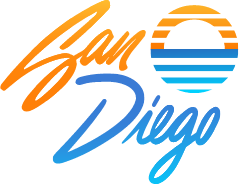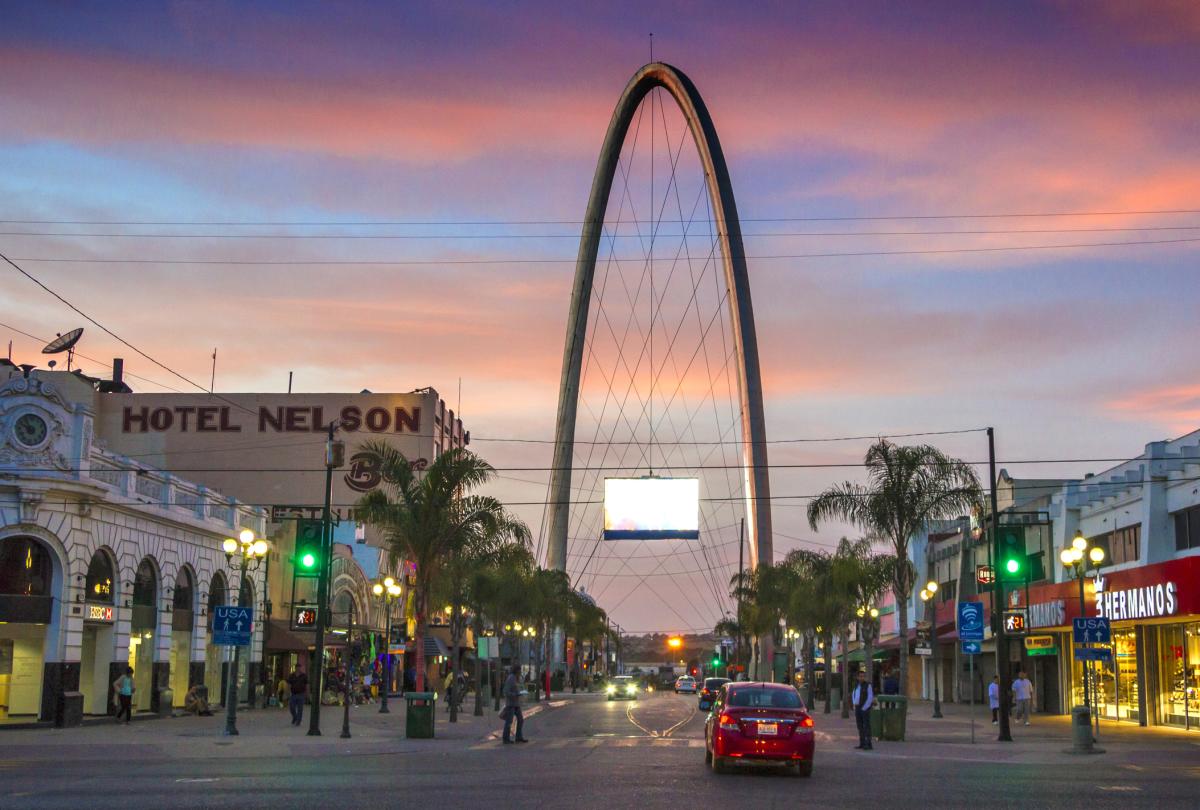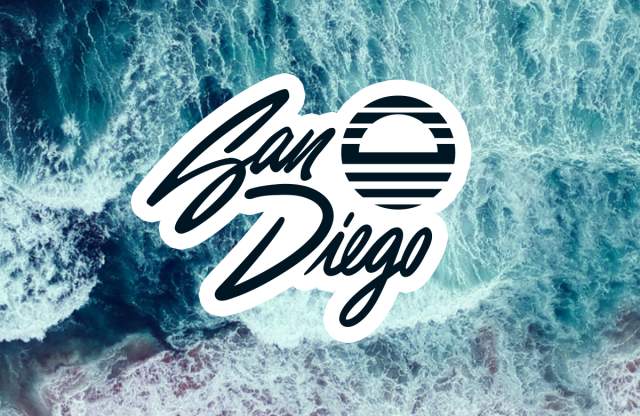Living in San Diego means access to mountains, the beach, Los Angeles, and yes, even Mexico! The popular border city of Tijuana lies just on the other side of southern San Diego’s Imperial Beach and Chula Vista areas. This is the perfect spot for a day trip filled with food, drinks, and some exploring.
A day trip to Mexico couldn’t possibly get much easier than crossing the border to go San Diego-Tijuana. With multiple entry points and a manageable crossing time, spending the day in TJ is not only simple but offers access to the great food and experiences that set this city apart.
Whether you’re a local looking for a getaway or a visitor hoping to add this popular tourist destination to your list, make sure you have a valid passport and get on your way to seeing the Zona Centro and Playas de Tijuana.
When people hear the word “Baja,” they often assume it simply means "south" or "lower"—which it does in Spanish. So yes, Mexico is technically “under” California. But there’s more to it than that. Baja California is not just a direction—it's a vibrant and diverse Mexican state that’s part of a unique and beautiful peninsula extending below the U.S. state of California.
Let’s dive into what makes Baja California such a special place to visit—whether you’re a foodie, a wine lover, a beach enthusiast, or a curious traveler.
Understanding the Geography: Two States, One Peninsula
Mexico’s Baja California Peninsula is the westernmost stretch of the country, running south along the Pacific coast. It’s divided into two Mexican states: Baja California (in the north),Baja California Sur (in the south)
To the west lies the Pacific Ocean, and to the east is the Gulf of California (also called the Sea of Cortez). This geography makes the region perfect for ocean lovers, offering everything from surfing to fishing to scenic seaside drives.
What’s in Baja California?
Tijuana: The Northern Gateway
At the very top of Baja California sits Tijuana, just across the border from San Diego, California. It’s a city full of energy, culture, art, and, of course, incredible street food. For many Southern Californians, Tijuana is just as famous as Cabo San Lucas—but with a completely different vibe.
Ensenada: A Coastal Gem
Head about 70 miles south of Tijuana and you’ll find Ensenada, a port city known for its ocean views, seafood, and laid-back charm. Cruise ships often stop here, and it’s a great place to enjoy everything from surfing to sipping local wines.
Valle de Guadalupe: Mexico’s Wine Country
Just inland from Ensenada lies Valle de Guadalupe, often referred to as the Napa Valley of Mexico. This wine region has exploded in popularity in recent years, attracting both serious wine connoisseurs and curious day-trippers. With boutique wineries, farm-to-table restaurants, and stunning desert landscapes, it’s an unforgettable destination—easily reachable from San Diego in just a couple of hours.
Cabo vs. Tijuana: Two Famous Names, One Peninsula
Most travelers have heard of Cabo San Lucas, located at the southern tip of the peninsula in Baja California Sur. Known for its luxury resorts, beaches, and nightlife, Cabo has long been a go-to vacation spot.
But don’t overlook the north. Cities like Tijuana and Ensenada offer a different kind of experience—less resort-driven, more culturally immersive, and much more accessible for a quick getaway from the U.S.
Image by iStock|Denis Kabanov
How to Visit Baja California
Getting There:
From Southern California, Baja California is an easy drive. You can walk or drive across the U.S.–Mexico border at San Ysidro (near San Diego) into Tijuana. If you're headed to Valle de Guadalupe or Ensenada, renting a car or booking a private tour is the way to go.
Day Trips and Tours:
Many visitors take day trips from San Diego to Valle de Guadalupe to enjoy wine tastings, gourmet meals, and scenic views. Private tours are available, or you can travel on your own with a little planning.
What to Bring:
Make sure you bring your passport, Mexican car insurance if you’re driving, and pesos (though many places also accept U.S. dollars). And bring your appetite—between the tacos, wines, seafood, and artisanal cheeses, you’re in for a culinary treat.
Why Visit Baja California?
Baja California offers the perfect mix of adventure, culture, and relaxation. Whether you’re sipping wine in Valle de Guadalupe, strolling the boardwalk in Ensenada, or enjoying street tacos in Tijuana, you’ll experience a side of Mexico that’s both authentic and incredibly welcoming.
So next time someone mentions “Baja,” you’ll know—it’s not just south. It’s a destination all its own.
Visiting Tijuana
If you appreciate Mexican cuisine, good beaches, and Mexican culture, visit Tijuana. You are sure to make your Tijuana trip enjoyable with Mexican food, Tijuana tours, craft beer, and easy access back to downtown San Diego via the San Ysidro trolley station. It can be refreshing to grab street tacos and shop with market vendors before visiting a museum or grabbing a drink and hitting the beach. Really, anything you imagine for your day in Mexico, Tijuana will be waiting to offer.
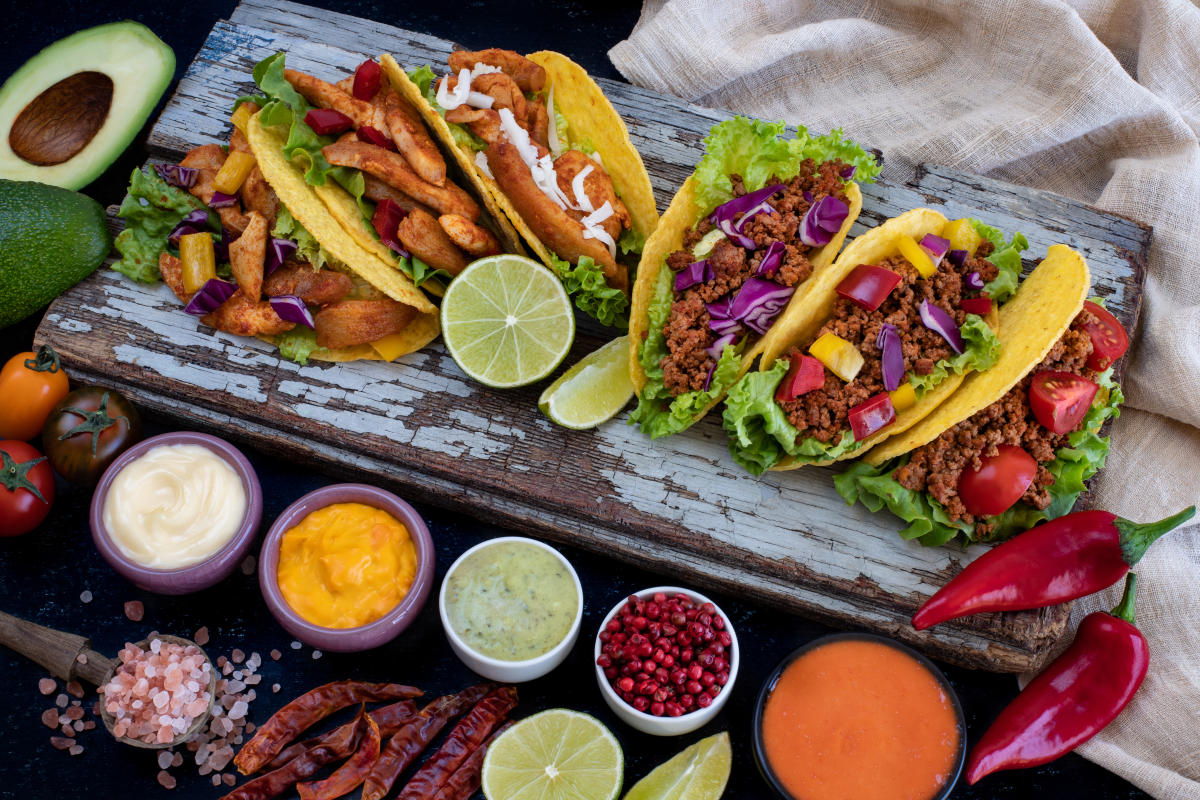
Tasting Tijuana: Where to Eat and Explore in Zona Centro
No trip to Tijuana is complete without diving into the city’s bold, colorful, and creative food scene. From traditional tacos to gourmet bites, the options are endless—and you don’t need a tour guide or a car to enjoy it all.
Start your culinary adventure in Zona Centro, Tijuana’s bustling downtown district. Here, everything from casual street food to elevated fusion cuisine is within walking distance.
Telefónica Gastro Park: A Must-Visit Food Haven
Just a short walk from the heart of downtown, Telefónica Gastro Park is one of Tijuana’s most beloved food destinations. This open-air food hall is home to a collection of innovative food trucks, artisanal vendors, and a central bar offering local craft beers, wines, and cocktails.
You’ll find something for every palate—from juicy burgers and grilled seafood to plant-based tacos and handmade desserts. Whether you’re a die-hard carnivore or a dedicated vegetarian, Telefónica has options to satisfy your cravings.
Upon arrival, you’ll walk into a lively outdoor dining space, lined with food stalls on both sides. You can grab a seat here, or head into the indoor section tucked under terraced steps. Inside, you’ll find more vendors serving things like specialty coffee, craft sandwiches, local cheeses, and smaller snacks.
Pro tip: Head upstairs to the second-floor balcony for a quieter experience. You’ll enjoy views of the gastro park and downtown Tijuana, plenty of sunlight, and a more relaxed atmosphere.
What to Eat: Classic Flavors and Creative Twists
While menus vary, here are a few staples you won’t want to miss:
Fish tacos – A Baja classic, usually served crispy with fresh salsa and creamy sauce.
Craft beer – Tijuana’s beer scene is growing fast, and Telefónica’s bar features some of the best regional brews.
Street-style snacks – From spicy elotes (grilled corn) to loaded fries, you’ll find plenty of shareable bites.
Global fusion – Think Korean tacos, Mediterranean bowls, or gourmet hot dogs with a Mexican twist.
It’s the perfect spot to sample multiple dishes without having to travel far—or break the bank.
More Local Flavor: Beyond Telefónica
Of course, Telefónica isn’t the only game in town. Tijuana is packed with food trucks, market stalls, taquerías, and restaurants—each offering its own slice of local life. Don’t be afraid to venture a few blocks off
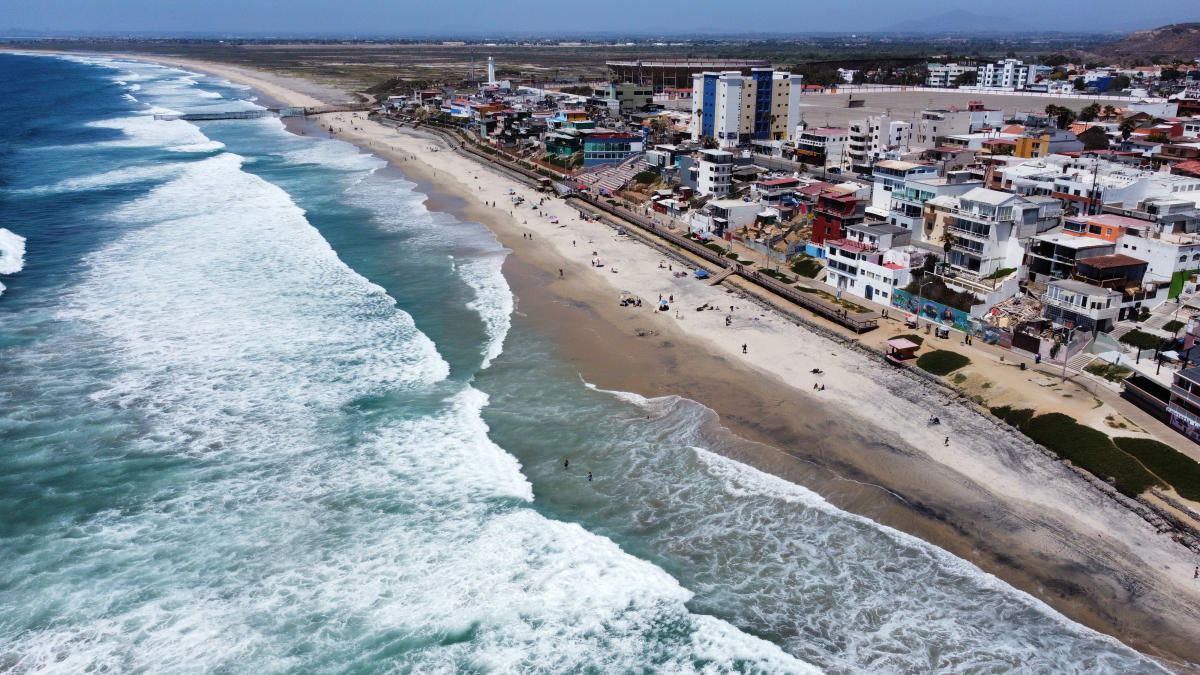
Beaches in Tijuana
Tijuana isn’t just about food and nightlife—it also boasts beautiful beaches just minutes from downtown. Playas de Tijuana is the city’s main beachfront area, ideal for a quick seaside escape. For surfers, Baja Malibu, just south of the main beach, is a favorite spot, though it can get busy on weekends.
If you have more time, head 20 minutes south to Playas de Rosarito or continue 45 minutes to La Fonda for a quieter coastal vibe. But for a convenient beach day—especially if you’re coming from San Diego—Tijuana’s city beaches are your best bet for sun, sand, and ocean views without the long drive.
About the San Ysidro Border
The San Ysidro Port of Entry is the busiest land border crossing in the world, connecting San Diego and Tijuana. With over 90,000 people crossing daily—by foot or vehicle—it’s a vital hub for commuters, families, and travelers alike.
Since opening in 1970, it has grown to accommodate more than 106 million people annually, along with 48 million vehicles. For many, crossing the border is a regular part of life, much like commuting between neighborhoods in a major city—except this one happens to span two countries.
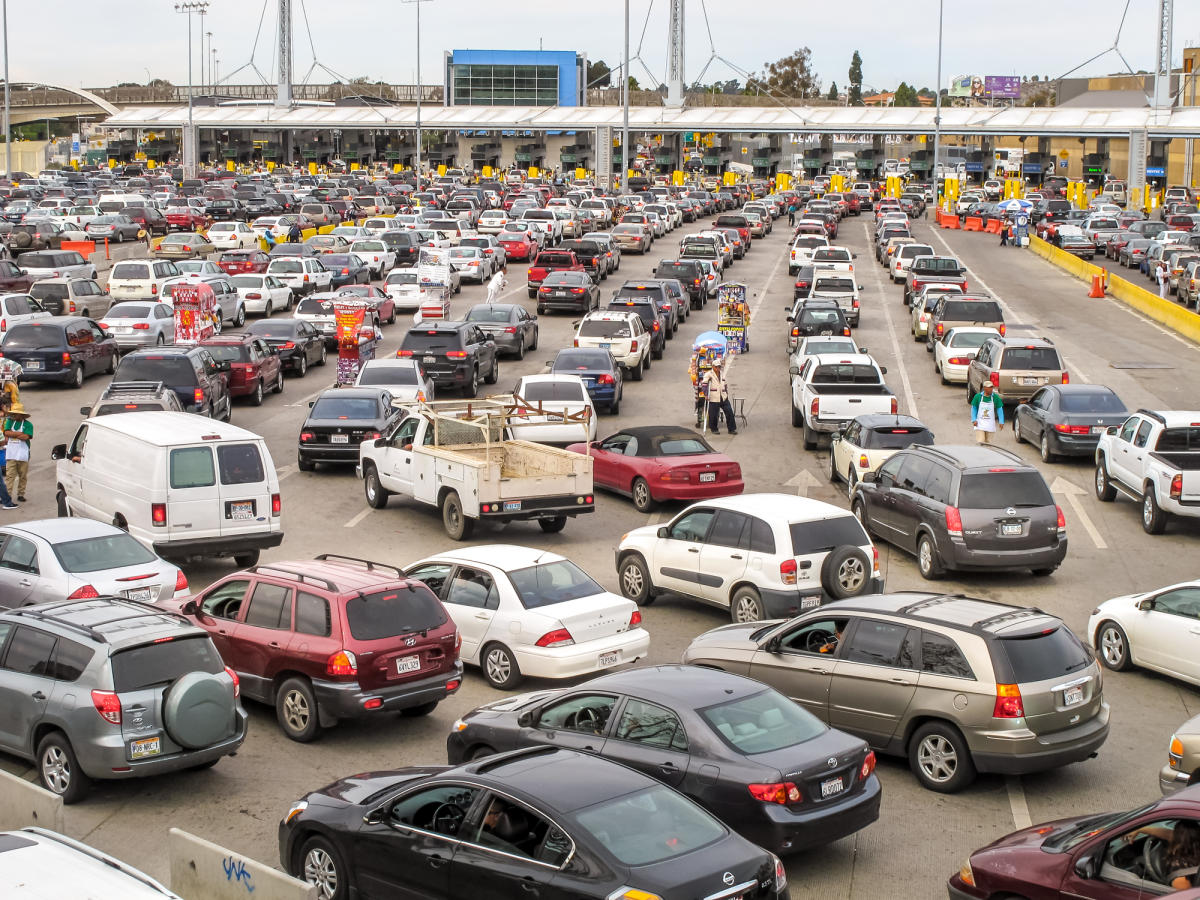
Image by iStock|Photo Beto
San Diego’s 3 Border Crossing Locations
There are three ports of entry between San Diego and Tijuana, each serving different needs:
-
San Ysidro Land Port of Entry
This is the busiest and most popular crossing—perfect for day trips to Tijuana, Ensenada, or Rosarito. It’s easily accessible without a car, places you right in the heart of Tijuana, and is the best option for most travelers. If someone says they’re “crossing the border,” this is likely where they mean. -
Otay Mesa Border Crossing
Located farther east, Otay Mesa is usually faster but less convenient. It’s better for commercial traffic or travelers avoiding long lines, but it’s not ideal if you’re heading to or from central San Diego or central Tijuana. Return via San Ysidro if possible for a smoother trip back. -
CBX (Cross Border Xpress – Tijuana Airport)
CBX is a pedestrian bridge that connects directly to the Tijuana International Airport. It’s only for airline passengers with valid tickets and ID, and can’t be used for casual border crossings. However, if you're flying into Mexico, Tijuana’s airport is often cheaper than flying from San Diego—making CBX a great option for international trips.
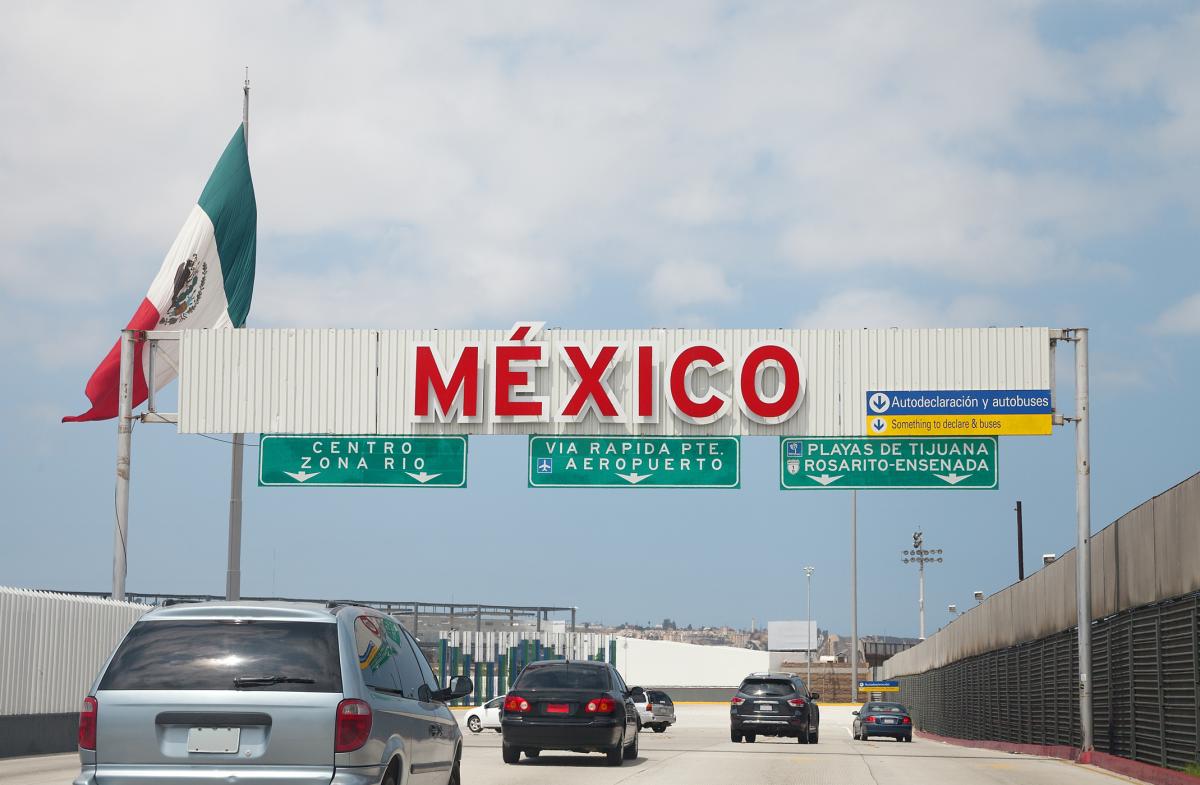 Image by iStock|stellalevi
Image by iStock|stellalevi
Crossing the San Ysidro Border: How to Get There and What to Expect
If you’re visiting Tijuana from San Diego, the easiest way to cross is usually via the San Diego trolley. Starting at downtown’s Santa Fe Depot, hop on the Blue Line straight to the San Ysidro border station—the trolley’s last stop. This is a smooth, hassle-free way to get right to the border on foot without worrying about parking or driving in Tijuana.
Once you cross on foot at the San Ysidro Port of Entry, you’ll be steps away from downtown Tijuana, where taxis, Ubers, buses, or just walking can take you anywhere you want to explore.
Driving to San Ysidro
If you prefer to drive, head south on I-5 until you reach the end, which turns into the El Chaparral vehicular entry point. Follow the “International Border” signs. Keep in mind that driving means dealing with Tijuana traffic and parking, but it’s a good option if you want to visit beaches or explore at your own pace.
Using Otay Mesa Port of Entry
The Otay Mesa crossing is farther east and often less crowded than San Ysidro, but it’s less convenient if you want to get to central Tijuana or San Diego. This crossing connects San Diego’s Otay Mesa neighborhood with Tijuana’s Otay Centenario borough. It’s worth considering if you want a quicker, less congested crossing and don’t mind a longer drive.
What About the Cross Border Xpress (CBX)?
The CBX is a pedestrian bridge that connects directly to Tijuana International Airport. It’s only for travelers with airline tickets flying in or out of Tijuana, so it’s not an option for casual day trips. If you’re flying to other parts of Mexico from Tijuana, CBX lets you skip the long lines at San Ysidro and Otay Mesa.
